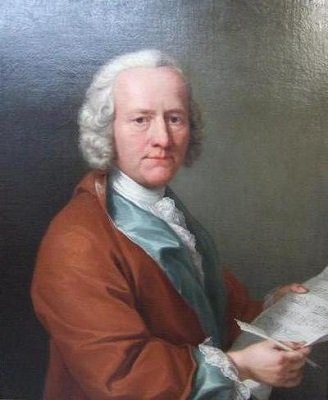Born: 1687; Alkmaar, Netherlands Died: 1761; London, England Period: Baroque
Willem de Fesch was a virtuoso Dutch violone player and composer.
The pupil of Karel Rosier, who was a Vice-Kapellmeister at Bonn, de Fesch later married his daughter, Maria Anna Rosier.
De Fesch was active in Amsterdam between 1710 and 1725. From 1725 to 1731 he served as Kapellmeister at Antwerp Cathedral.
Thereafter he moved to London where he gave concerts and played the violone in Handel’s orchestra in 1746. In 1748 and 1749 he conducted at Marylebone Gardens. He apparently made no public appearances after 1750.
Willem de Fesch
by François Morellon de La Cave, 1751
His works included the oratorios Judith (1732) and Joseph (1746), as well as chamber duets, solo and trio sonatas, concertos and part songs. Both oratorios were thought lost until 1980 when a copy of a manuscript of Joseph was found in London’s Royal Academy of Music.
The influences upon De Fesch’s music were apparent. Melodic lines were influenced by the Italians, particularly Vivaldi. De Fesch was also influenced by Handel but his shorter compositions demonstrate an individual character that can only be considered enigmatically De Fesch.
The process of his works show periodization; compositions from Antwerp were especially virtuostic — though simpler towards the end — and London compositions can be characterized in terms of pastoral serenades, concertos and oratorios with English texts.
De Fesch was not only an accomplished composer and violonist, as can be understood by the diversity of his music, but a virtuoso violinist as well.
 RSS Feed
RSS Feed















 February 23rd, 2021
February 23rd, 2021  Awake Goy
Awake Goy 
 Posted in
Posted in  Tags:
Tags: 













